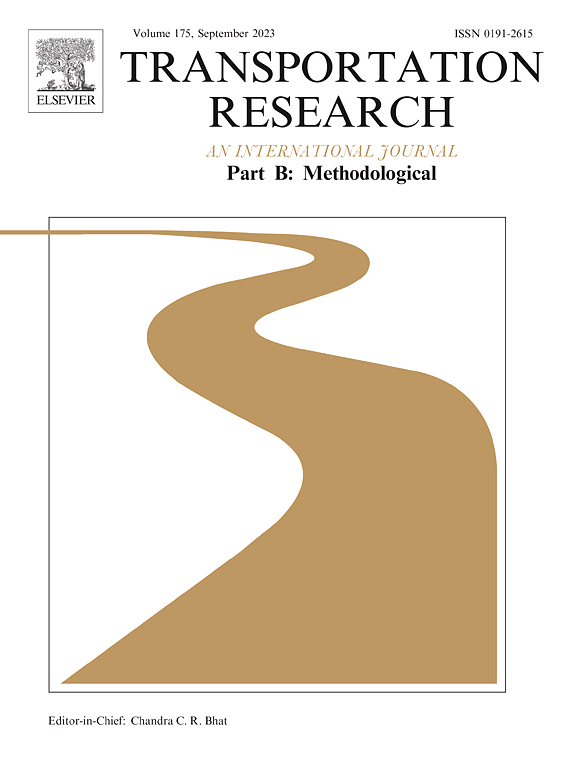Airport's optimal decisions considering non-aeronautical business, terminal capacity and alternative regulatory regimes
IF 6.3
1区 工程技术
Q1 ECONOMICS
引用次数: 0
Abstract
This study explores the optimal decisions of airports on charge, capacity, and suggested passengers’ arrival time at the airport under various regulatory regimes (e.g., single- or dual-till regulation). By considering both aeronautical- and non-aeronautical businesses and further incorporating the non-linear relationship between queuing time in the check-in zone and shopping time in the retail zone, we find that unlike runway capacity expansion, where single-till regulation leads to underinvestment (as compared to the unregulated case), terminal capacity expansion is contingent upon traffic volumes. Under higher traffic volumes, terminal capacity expansion becomes less efficient in reducing the terminal congestion delay, thereby reducing the effect on expanding passengers’ shopping time and concession revenue. As the revenue loss is disregarded under single-till regulation, airports would overinvest in terminal capacity under higher traffic volumes, which reverses the underinvestment tendency under lower traffic volumes. Also, single-till regulation results in a later airport arrival time suggested to passengers, for which the excess concession revenue from an earlier arrival time is overlooked. By contrast, dual-till regulation tends to attract more passengers to the airport by reducing terminal and runway delays, therefore leading to lower airport charge, shorter terminal time and higher capacity. The increased ridership and enhanced utility thus improve the overall social welfare.
考虑非航空业务、航站楼容量和替代监管制度的机场最佳决策
本研究探讨机场在不同管制制度下(如单一或双重管制)对收费、容量和建议乘客到达机场时间的最优决策。通过考虑航空和非航空业务,并进一步纳入值机区排队时间与零售区购物时间之间的非线性关系,我们发现,与跑道容量扩张不同,单一收货监管导致投资不足(与不受监管的情况相比),航站楼容量扩张取决于交通量。在交通量较高的情况下,航站楼扩容对减少航站楼拥堵延迟的效果较差,从而降低了对扩大旅客购物时间和优惠收入的影响。由于单一收货监管忽略了收益损失,机场在高交通量条件下会对航站楼容量进行过度投资,从而扭转了低交通量条件下的投资不足趋势。此外,单一收银规则导致建议乘客较晚到达机场的时间,因此忽略了较早到达时间带来的超额特许权收入。相比之下,双收费台管制往往通过减少航站楼和跑道延误来吸引更多的乘客,从而降低机场收费,缩短航站楼时间,提高运力。客流量的增加和效用的提高提高了整体的社会福利。
本文章由计算机程序翻译,如有差异,请以英文原文为准。
求助全文
约1分钟内获得全文
求助全文
来源期刊
CiteScore
12.40
自引率
8.80%
发文量
143
审稿时长
14.1 weeks
期刊介绍:
Transportation Research: Part B publishes papers on all methodological aspects of the subject, particularly those that require mathematical analysis. The general theme of the journal is the development and solution of problems that are adequately motivated to deal with important aspects of the design and/or analysis of transportation systems. Areas covered include: traffic flow; design and analysis of transportation networks; control and scheduling; optimization; queuing theory; logistics; supply chains; development and application of statistical, econometric and mathematical models to address transportation problems; cost models; pricing and/or investment; traveler or shipper behavior; cost-benefit methodologies.

 求助内容:
求助内容: 应助结果提醒方式:
应助结果提醒方式:


